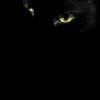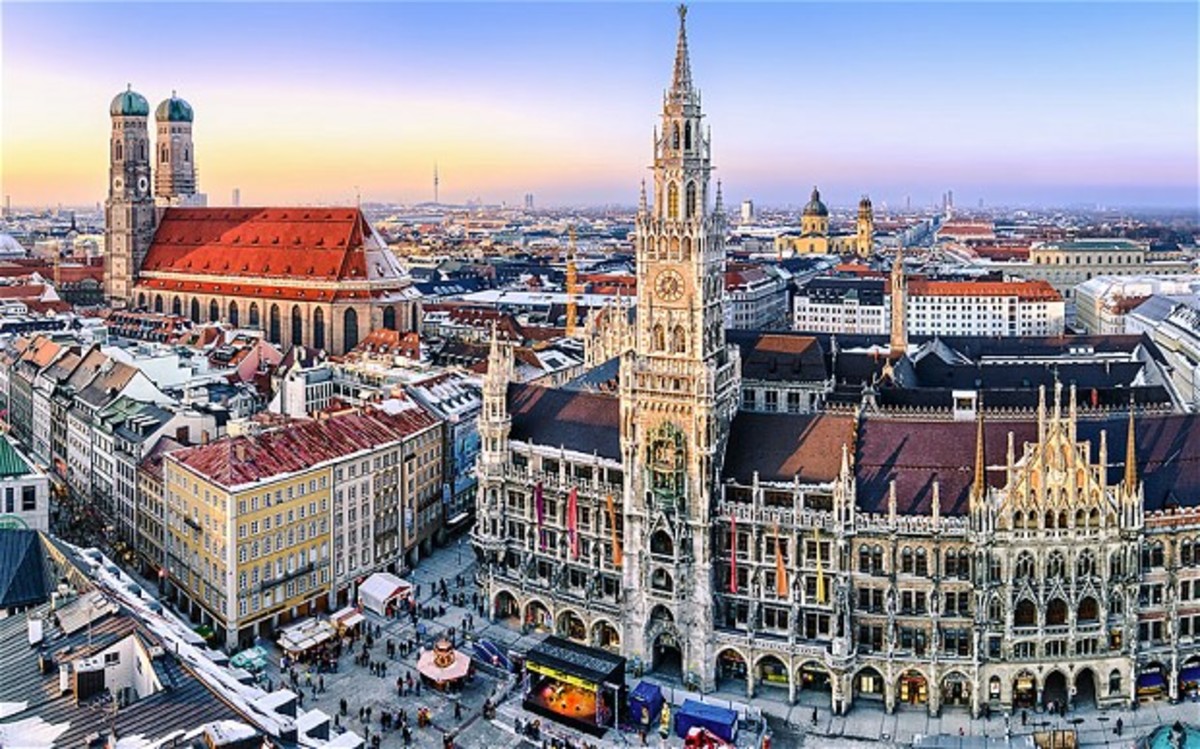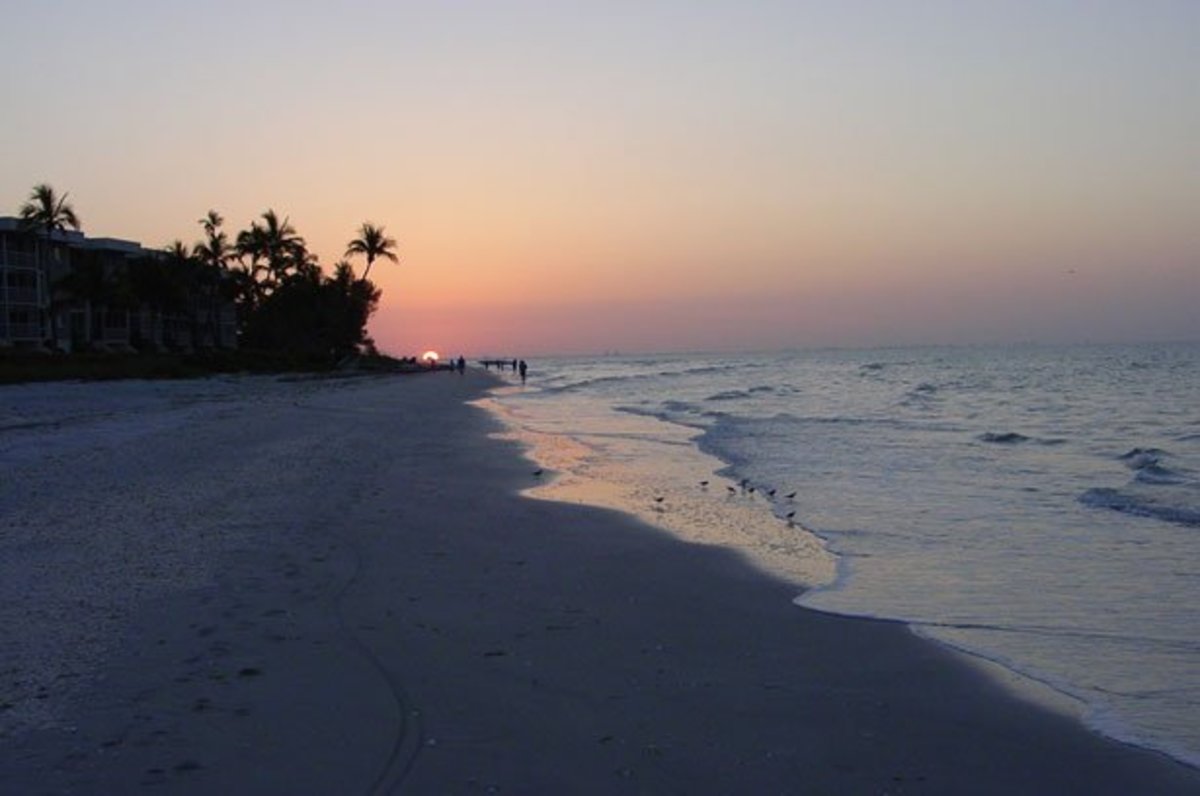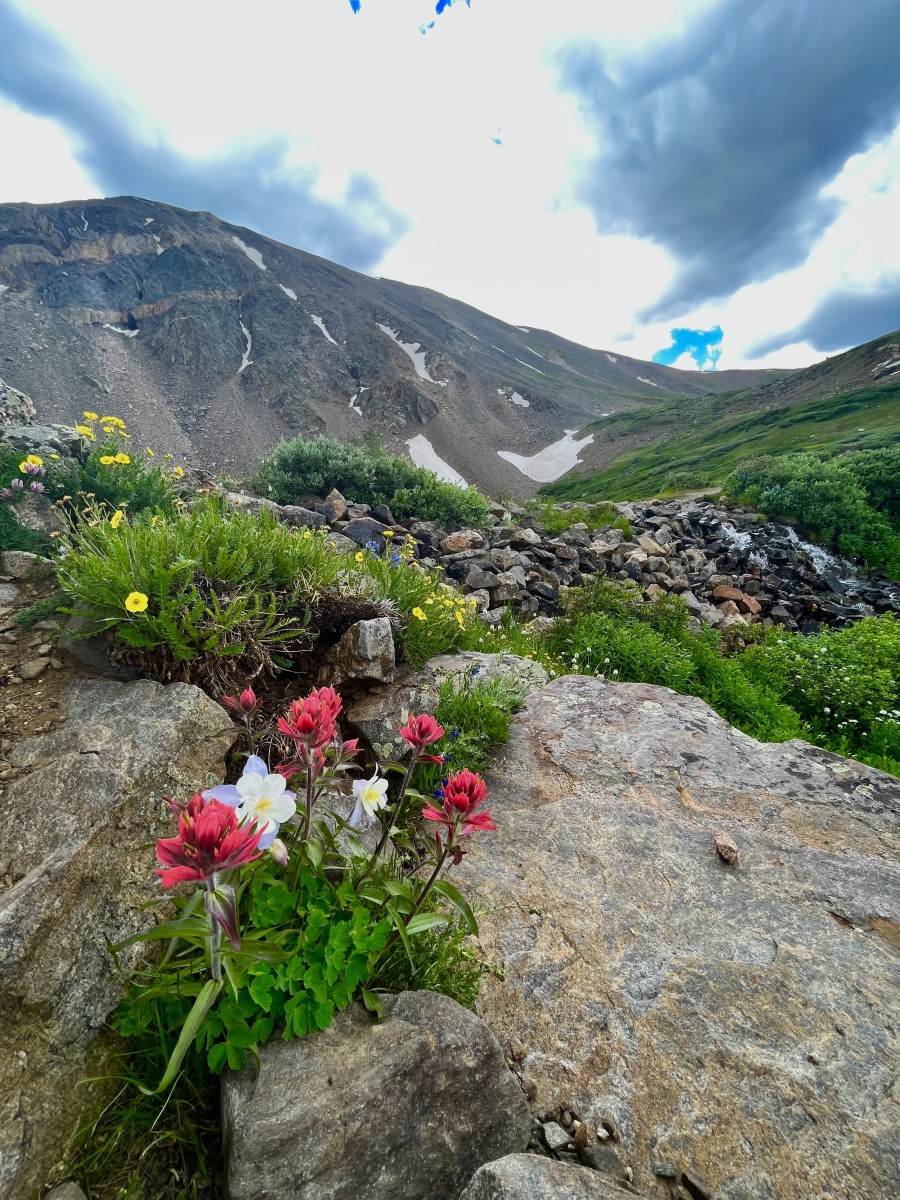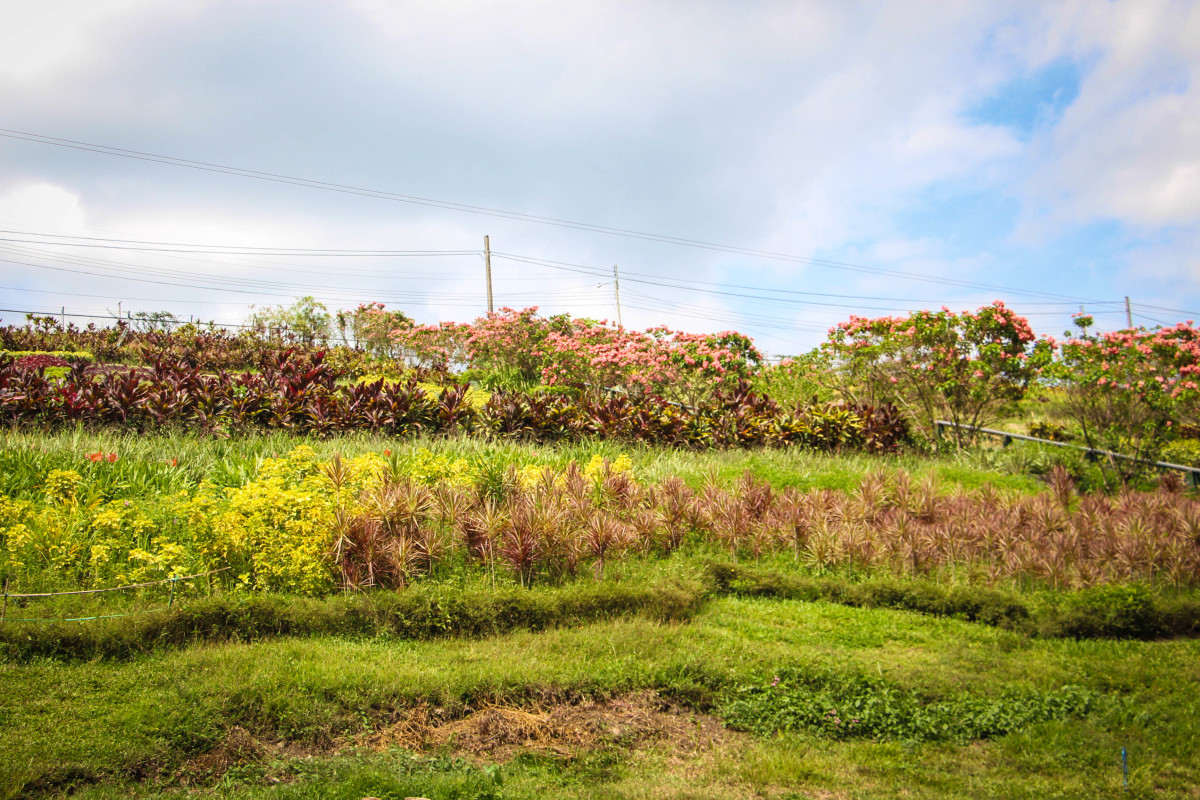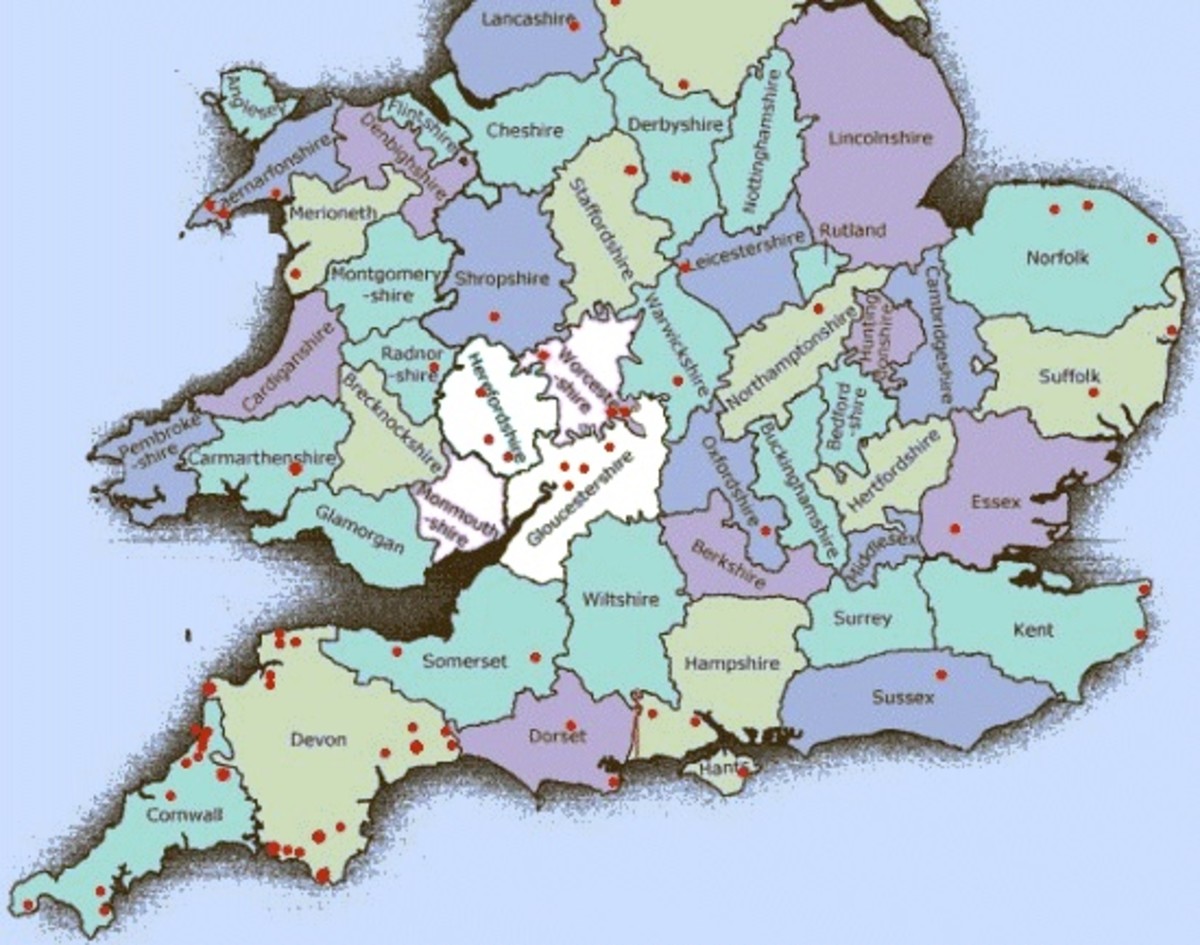Island Fun
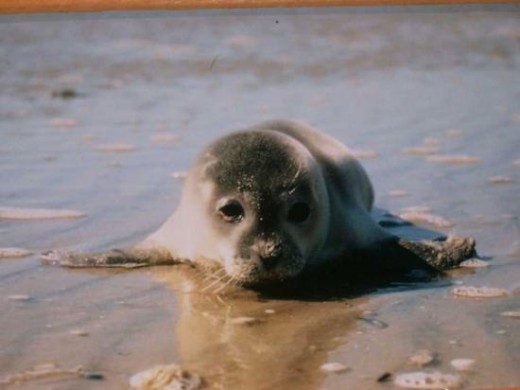
Saltwater, beach, wind, fun...
When I grew up there was a movie series that was about some little girls and a pony farm. It was called 'Immenhof' and we would have rather died than missed one of the movies. I tried buying it, but it is actually very expensive now, since it is that old.
One of the greatest vacations after Finland (I don't remember Amrum, which is a neighboring island.), we spend our first summer on the island Foehr. Again, this is many years ago, and I may not remember it like it was yesterday; or mix up the two vacations.
A vacation there is fun, but if you are actually a North German, I guess you appreciate it a little more. It's not Florida or the Bahamas, but it is a beautiful vacation spot with a lot of great history.
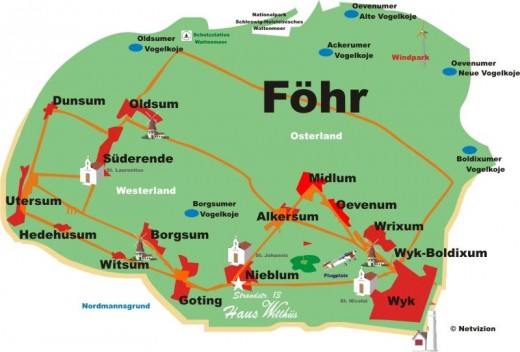
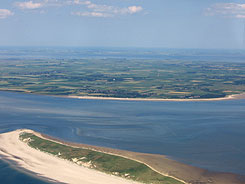
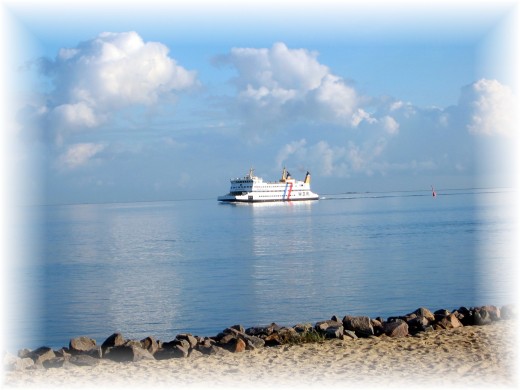
The Island 'Föhr'.
Using Wikipedia.org as a source (my Professors would probably go mentally through Medieval torture methods to think up a punishment), Foehris a Frisian Island on the (German) coast of the North Sea. It belongs to the federal state Schleswig-Holstein, who's name you horse lovers may know since the Holsteiner horses are famous within world-wide dressage- and jumping(?)- competitions.
Between all the islands such as Sylt and Amrum, Foehr is the largest one; but Thank God (at least back then) not as overrun with Tourism just yet as the other Two are.
Foehr has the nickname 'The Green Island', since Sylt and Amrum are sheltering it from the storms and it actually has a almost 'normal' vegetation. I remember a good amount of trees and grass. But, like most of the northern part of North Germany, it is also flat in a lot of places. The standing joke is that you can enter North German and look across the former marshland to see what the traffic light is doing on the other end. North Germany itsef has a lot of areas that are as flat as a board; only to show the occasional houses with a few trees around them in the middle of nowwhere; and the ugly factories here and there. But when you enter it, you can smell the salt in the air! Love it!
Bringing a car to Foehr isn't exactly life-saving. It is 12Km long and 6.8Km wide. The crazy runners I used to work with would be bored after a week. But, the northern marshland and the southern geestland are perfect for long walks and watching the many birds.
Marshland:
"In geography, a marsh, or morass, is a type of wetland that is subject to frequent or continuous flood. Typically the water is shallow and features grasses, rushes, reeds, typhas, sedges, other herbaceous plants, and moss.
Woody plants will be low-growing shrubs. A marsh is different from a swamp, which has a greater proportion of open water surface and may be deeper than a marsh. In North America, the term "swamp" is used for wetland dominated by trees rather than grasses."
http://en.wikipedia.org/wiki/Marshland
Geestland:
"Geest is a type of slightly raised landscape that occurs in the plains of in Northern Germany, the Northern Netherlands and Denmark. It is a landscape of sandy and gravelly soils, usually mantled by a heathland vegetation, comprising glacial deposits left behind after the last ice age during the Pleistocene epoch.
Geest lands are made up of moraines and sandars. They are almost always next to flat marshlands, the geest being higher and better protected against flood but, compared to the marsh, with poor soil for agriculture. Where the geest borders the sea directly, sand cliffs exist.
The oldest settlements in Northern Germany and Denmark lie on geest, since it provided better protection against storm floods. Many important towns are on the boundary between geest and marshland where people could enjoy the flood-protection of the geest but still use the much more fertile soil in the marsh."
http://en.wikipedia.org/wiki/Geestland
If you are looking for mountains, you are in the wrong spot. The highest elevation is just 13 meters above the mean sea level and right between the villages Midlum and Nieblum. But, standing on what we North Germans call a Deich, you can see a lot of the Island.
Deich:
A Deich is the seawall (dam, levee) around the island that keeps the water from flooding the island. It has to withstand a often angry North Sea in the winter and requires a lot of maintainance.
The island has some of these solitary houses or farms I mentioned. It seems that they were moved out of the areas of the villages back in the 1960s. They look a bit out of place and still like they belong. And I can imagine that life may be very peaceful, but also a bit lonesome at times.
Foehr used to be part of the mainland, but after the 'Grote Mandrenke' flooding it became an island. The tital creeks around it connect it to the North Sea.
"The (1st) Grote Mandrenke (Low Saxon for "Great Drowning of Men") was the name of a massive southwesterly Atlantic gale (see also European windstorm) which swept across England, the Netherlands, northern Germany, and Schleswig around January 16, 1362, causing at minimum 25,000 deaths. January 16 is the feast day of St. Marcellus (pope Marcellus I), hence the terrible storm tide is also called the "2nd St. Marcellus flood". The "1st St. Marcellus flood" which drowned 36,000 men mainly in West Friesland and Groningen (today provinces in the north of the Netherlands) took place on the same day (January 16) in 1219.
An immense storm tide of the North Sea swept far inland from the Netherlands to Denmark, breaking up islands, making parts of the main land into islands, and wiping out entire towns and districts, such as Rungholt on the island of Strand in North Frisia.
This storm tide, along with others of like size in the 13th century and 14th century, played a part in the formation of the Zuider Zee, and was characteristic of the unsettled and changeable weather in northern Europe at the beginning of the Little Ice Age."
http://en.wikipedia.org/wiki/Grote_Mandrenke
Foehr is sadly a great tourist spot. It has roughly 15KM of sandy beach and a beautiful National Park called 'Schleswig-Holstein Wadden Sea'.
http://en.wikipedia.org/wiki/Wadden_Sea_National_Parks
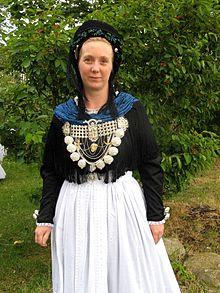
Names straight from the Romans?
There is a German comic book series called Asterix & Obelix. It is the funniest thing ever. You have to read them one of those days!
The villages in the comic books are all named with Roman names that end in 'um'. So are the villages of the island; Alkersum, Borgsum, Dunsun, Midlum, Nieblum, Oevenum, Oldsum, Witsum, and Wrixum. Only Goting and its beautiful cliff and Suederende are named different. According to the famous Wiki, the 'um' stand for 'settlement'.
Minor artifacts and grave sites suggest that at the end of the Neolithicum settlers were drawn to the geestland surrounded by marshland. The Frisians settled in the 7th century and build their settlements on what eventually became Foehr. The 'island''s population grew quite largely.
A lot of the jewelery found on the island came originally from all over Scandinavia (Sweden, Norway, Denmark). And the remains of an old castle go back to the age of the glorious Vikings. Some Danish records show the Western part (Westerharde) as a refuge of a Pirate that was serving the Danish. The area was later transferred to Holstein. From then the ownership went back and forth a little.
The Deich (or also called Dike in some articles) was build in 1523 to win some more farmland in the northern marshlands. Shortly afterwards the Lutheran confession took roots on Foehr.
In the 17th century the seafaring folks received a big push forward by pastor Richardus Petri opening a private school that taught navigation. Its interesting that Petri taught navigation, but never sailed himself. Whalers eventually settled on the island too, which had around 6,000 people living there in 1700; compared to the little over 8,000 that are living there now. Of the then 1,600 whalers, 150 were Commanders who's well decorated houses are what now is Suederende and Nieblum. Their tombstones in the cemeteries on Foehr (there are three churches total) are called 'talking tombstones'. Whaling eventually died out and the people on Foehr became farmers.
Foehr became the summer residence of Danish King Christian VIII around 1842. That's when it started to become a tourist resort.
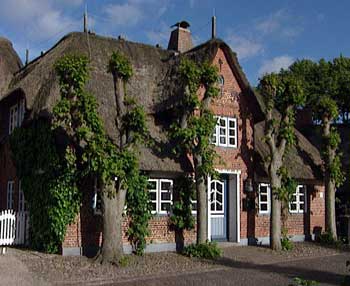
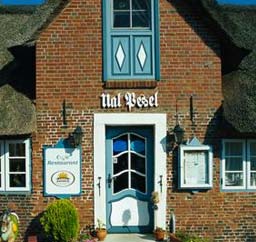
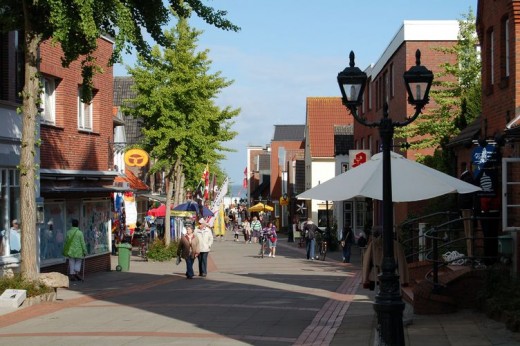
The Island Foehr
I don't remember my first vacation on an island. It was the island Amrum, which was back then already much more tourism then Foehr. I don't mind a little of it, but I am there to enjoy the island as it is, not a 'this is what tourists want to see' island.
It is my shame that I don't speak 'my own' native language and the vacation on Foehr was a reminder. On Foehr the Natives speak one of two North German/Frisian languages (not to be mistaken with a slang!); they either speak Fering (or Foehring) or Platt Deutsch (Low German); Fering being the dominant language. Platt is a musical language I love to hear, but can't speak.
The name Foehr comes from the Frisian word Feer (it's original Frisian name) and means 'barren'.
Frisians are a breed of interesting people, not just a piece of history.
"The Frisians are a Germanic ethnic group native to the coastal parts of the Netherlands and Germany. They are concentrated in the Dutch provinces of Friesland and Groningen and, in Germany, East Frisia and North Frisia, that was a part of Denmark until 1864. They inhabit an area known as Frisia. The Frisian languages are still used by 500.000 speakers; dialects of Frisian are recognized as official languages in both the Netherlands and Germany."
http://en.wikipedia.org/wiki/Frisians
Some old traditions are still out there and strong. One is the 'Kenkenbuum', a wooden frame decorated with a wreath of green leaves, around the Christmas time. Another one is Hualewjonken, which is a get-together of confirmed bachelors that are not yet 30 years old.
But, besides lots of old traditions, the only city Wyk and the island itself are full of great places to go and things to do. The Art is amazing and the people are very welcoming!
They even have their own, internationally recognized, rockband called Staffour. Alexander Rethwisch and his brother Konstantin, together with Eike Luechow and Christian Lidsba, even toured with the Backstreet Boys and John Fogerty. They had several songs in TV shows and even movies. http://en.wikipedia.org/wiki/Stanfour

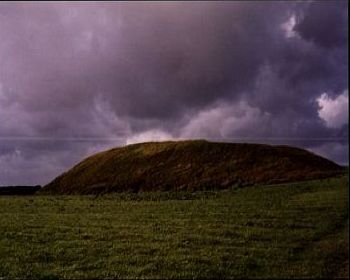
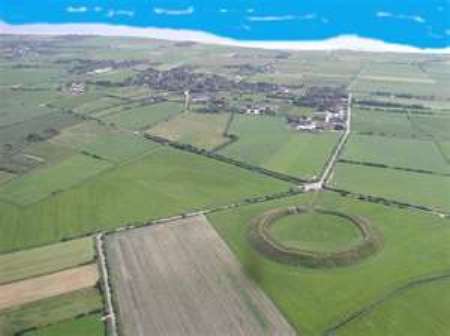
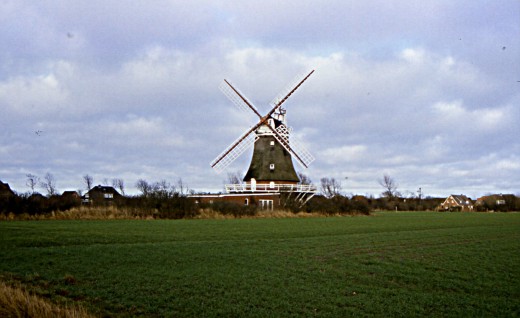
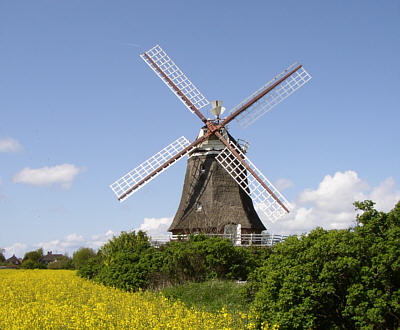
History and Viking Castles
Like with everything in Germany and Europe, History lovers will have a blast! And for such a small island the variety is great. 1886 brought the Island a bell tower that withstood time and angry winter weather. The Island even has its own version of a 'River Walk' through the 'Sandwall Esplanade'. And two whale jaw bones surround the door of a Museum that will give great insides on Frisian Customs and History. Oluf Braren (lived from 1787 to 1839) is the Island's very own 'naive art' painter. While he was practically unknown while he was alife, he became popular later in the 20th century. Eventually other professional artists, including Max Liebermann, Edvard Munch and Emil Nolde, made Foehr and the neighboring Alkersum their home. And for those that speak Fering, there are several old and new publications that have even won literature competitions.
If you rather see some of the greatest examples on how well Germans build, there are three Medieval churches from as long ago as the 12th/13th century. Yes, there are many old churches in Germany, but to build something that long ago on an Island that faces the angry North Sea every winter, speaks highly of the architects of such beauty. St. Lawrence in the village Suederende, St. John in Nieblum and St. Nicholas in Wyk-Boldixum were beautiful creations; and even the graveyards had a ton of history to show.
Another great piece of history are the five windmills that can be found all over the island. They represent different styles of Windmills and are well worth the visit. Wrixum, Oldsum and Borgsum have a 'octagonal Dutch mill', while the museum has a 'buck mill' that is formerly from the Hallig Langeness. Wyk itself has another Dutch mill that is called Venti Amica and was build in 1879.
The Halligs themselve, ten small islands that don't have a Deich and thus are flooded in the winter, leaving their houses sticking like islands themselves out of the water, have a lot of history to offer. Especially Hooge was worth a visit and if I ever find a good man, I would love to get married in that beautiful little church.
The island also has some signs of colonization from the Bronze Age called dolmens.Dolmens are single chamber tombs and go as far back as 4000-3000 BCE. Most of the 17 still open for visitation are on the island.
Another interesting sight is the 'Lembecksburg' by Borgsum. It dates back to the Viking Age and is over 100 Meters wide (one Meter is a little over 3 feet/1 yard). The walls itself are eight Meters high and must have taken a lot of work on a flat island like that. The story is that a Steward of a Danish King named Klaus Lembeck made the island is residence in the Middle Ages.
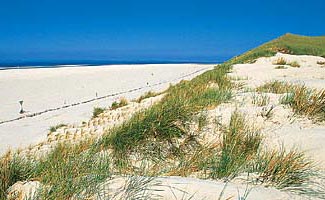
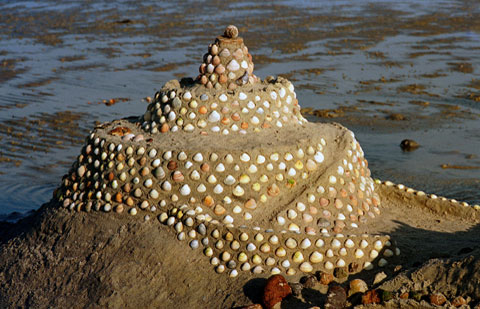
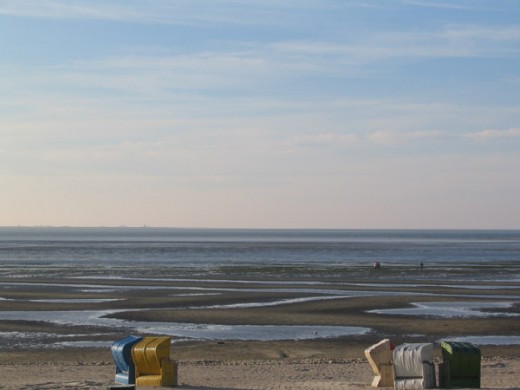
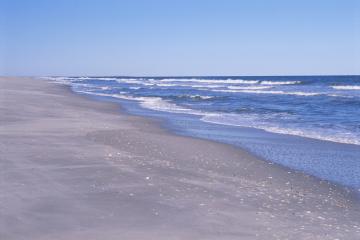
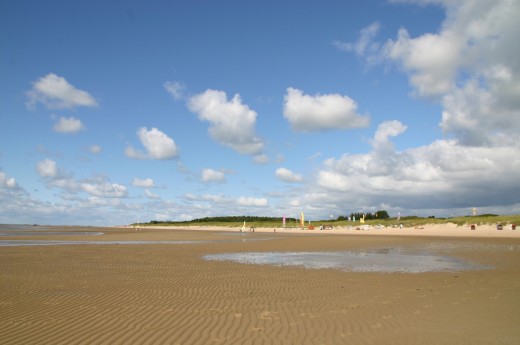
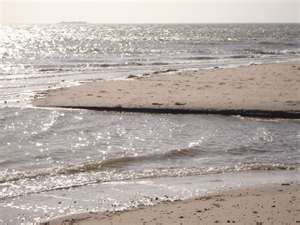
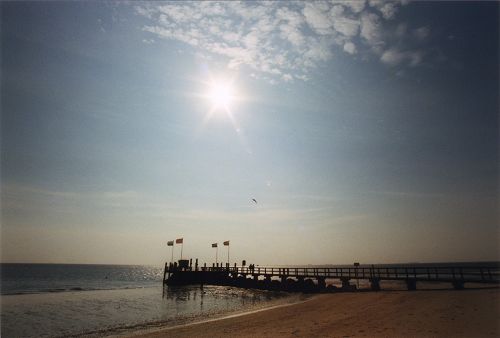
Beaches and more Beaches
If you love sand-castles and being toasted in the sun, Foehr has lots of beaches to offer. The neighboring Amrum has the stunningly beautiful white beaches with the green beach grass as a beautiful contrast; a delight for any nature photographer since there are tons of birds to watch. Foehr itself is not too bad either. I remember spending almost every waking hour on the beach.
We would lay in the sun, build entire Empires of Sand-Castles, catch all kinds of different beach creatures; some of them equipped with claws ready to attack a too curious hand/finger. Some beaches had these weird looking little 'chair' things you can sit on. They are almost like a recliner for the beach and very comfortable. But I rather helped my Mom build our own little paradise with tent-like wind covers.
When the water was gone we would walk miles and miles across the 'Watt', sometimes using the first few feet of 'mudd' along the beach for a rather muddy version of a snowball fight. The black and brown creation can give you your very own face mask and caused a lot of curses and laughter. After those first few feet the 'Watt' became a piece of art with its sea/beach life, the small patches of water, the lines and pictures drawn into the sand by waves. We saw uncountable types of crabs in the shallow water and got bitten more than once.
It is actually possible to walk from one Island to the other by walking across the 'Watt'. Just make sure you beat the water, usually on a roughly 6 hour schedule, or you will have to try to catch a ferry back. So either walk fast or bring money! grin
I loved the beach in any form. Anything from a relaxing day building castles to wild races on horseback; it was a great childhood memory I will never forget!
Getting there was an interesting adventure too. There isn't much traffic on the island and we just didn't feel like driving everywhere. So we would back all of our stuff on our backs and walk.
We had rented a small apartment in somebody's house and the beach wasn't but a mile or two away from Oldsum, if I remember it right. The way there was a lot of fun. We would walk along small roads between giant fields full of cows, sheep and horses. Along the Deich itself (on the inside of course) were fields with giant looking bulls that got to spend their entire summer outside. The small ditches along the roads had a selection of frogs and bugs every real kid can enjoy. And a bird-lover would have a blast with all the species that can be found. The air smelled like salt and the weather turned us into nicely browned little brats.
The sheep are also on the Deich grassing and on one occasion we were stuck between laughter and a bit of fear. Somehow a buck had taken an interest in my sister and wouldn't leave her around. We had been petting him for a while, but I guess he got tired of it. Eventually he even pushed her over and started chasing her with lots of noise. It was funny to see my sister run like that, but it did scare as a little. But, my Mom being the heroic Dragon diving down with furious anger on those threatening her or any child, chased him off!
My favorite part, despite being on the way home from a great day, was always the part where we sat on the Deich and watched the amazing piece of art that comes with the sun going down on a multi-colored sky and over the soft waves of the North Sea. Its breath-taking!
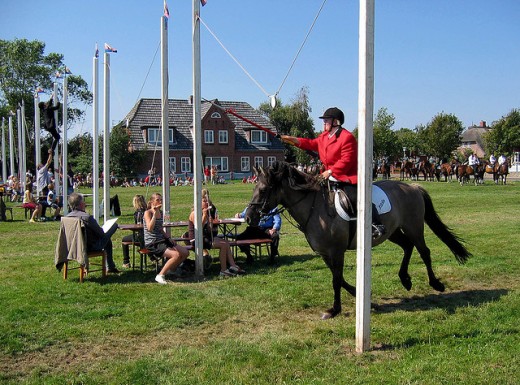
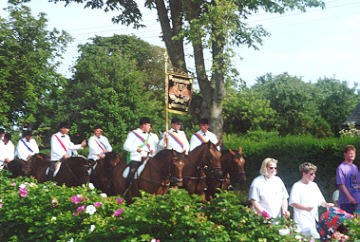
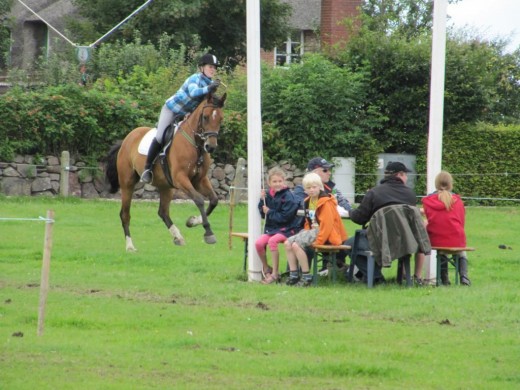
Ringreiten - A sport that would have pleased the Knights!
After enjoying decoy ponds and Harbour seals, watching the daily life of Oystercatchers, Shelducks, Peewits, Snipes and Common Eiders, watching Ringreiten wasn't just second best.
I love horses and tradition! And while it doesn't always look like much, not every Joe Schmo can hit a inch wide brass ring dangling on a line; ...while riding a galloping horse and 'picking it' with a lance compatible to a pool stick.
The German poet Friedriech Hebbel stated
"Wohl ist des Ringreitens buntes Gewühl
ein getreues Abbild vom Lebensspiel.
Welche die Pferde gut zu reiten verstehen
und gehörig vorwärts zum Ringespäh'n,
denenwird's beim Ringreitengut ergeh'n."
Loosely translated:
Great is the chaos of the Ringriding
A correct picture of Life's game.
Which horses understand well.
And eager pressing forward to the Ring
Those will fare well in Ringriding.
Ringreiten isn't just about stabbing a ring on a horse. Its a renewal of traditions going back in history for years and years. It starts with speeches and parades, often with German precision and military discipline and fancy looking uniforms. The horses are well trained and often compete in other discipline as well. The riders take this very serious!
Two poles are on both sides of a.. lets call it a path. A rope is holding a metal thing at roughly the height of the rider. On both sides are volutneers adjusting it as needed. A brass ring is equipped with a magnet and stuck to the metal thing on the rope.
The lance is somewhere between 50 and 160 centimeters long (for men) and the rings start out at 22 millimeters. During the course of the competition the ring will eventually be replaced by a 6 milimeter ring.
The goal is to gallop towards the ring and 'stick' it with the lance. The overall winner will be crowned King and take a important place in the next competition/parade. The loser will, with a good amount of good sports' fun, be named 'Blindstecher' (Blind-sticker?).
Ringreiten is the sport of the North, spreading across North Germany and Danemark, including the island Walcheren in the Netherlands. The largest competition happens in Aabenraa in the harbor-city Suedjuetlands and on the island Als. Annually over 1,000 Ringreiter compete for the title of King and enjoy a feast fit for Knights. Of course a major undertaking like this has to include good local food and a 'Volksfest' or fair with Bier (don't mistake it with the dishwater-like substance Americans call beer or you may offend a German), different horse activities and lots of fun for the Younguns.
In some places called 'Fahnenjagen' (Flag-Hunt), this is both a team- and individual sport!
As often in history, women weren't allowed until the 1920 when they started their own competition called 'Radringstechen' (Wheel-Ring-Sticking?). Their lance is much smaller than the male lance.
Related to the Medieval games and being a European Tradition, it does come with the 'Pomp' fit for any Medieval game.
Tradition and History finds much more support in a lot of the European countries; often explained to me with the heritage and often closer family ties experienced by Europeans. Especially the Germans are a very proud sort of people and take their heritage very seriously!
Tradition, Parades, a 'big stick' and a tiny token!
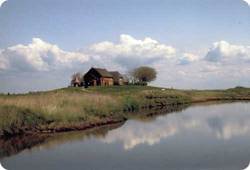
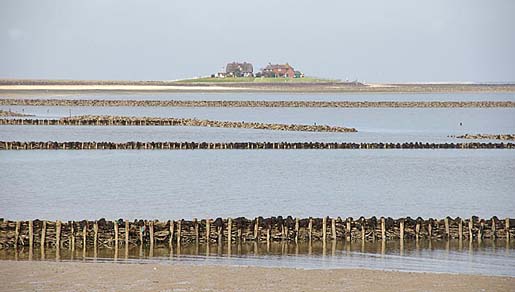
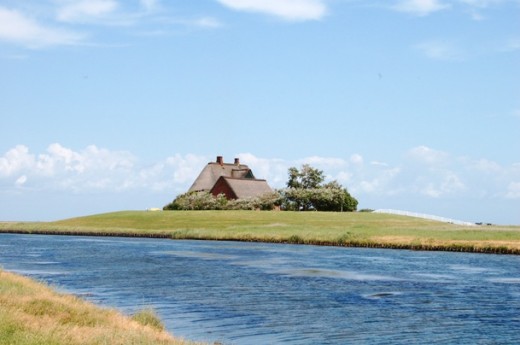
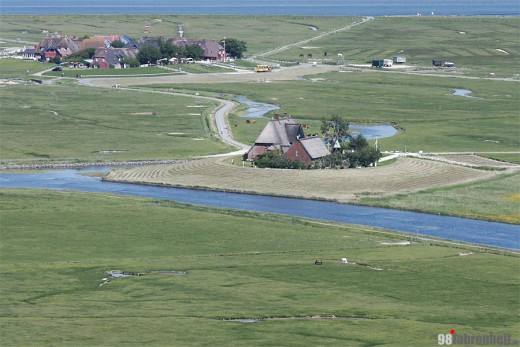
A different kind of life and not for the weak!
North Germans are a tough crowd and can be a bit 'their own' (eigen). Their language and the often harsh winters have formed a type of people I very much respect.
Imagine living on an already isolated island such as one of the ten Halligs. There used to be a lot more, but some fell victims to the storms and harsh sea of the winter.
- The Hallig Langeness is roughly 950 Hektar large, has 16 Warften (houses on hills) and 110 people living there. It has a 'narrow gauge' railroad connecting it to Oland.
- The Hallig Hooge with its beautiful tiny and very old church is only 570 Hektar, has 10 Warften and only 120 people living on it.
- The Hallig Groede is even less with 270 Hektars, 2 Warften and 17 people living there.
- Nordstrandischmoor is 175 Hektar with 4 Warften, 18 people living there and a tiny, one room, schoolhouse.
- Oland is tiny with 96 Hektar, one single Warft and 30 people living on it. It is connecte with Langeness via the railroad.
- Suederoog is only 60 Hektar with one Warft and 2 people living on it.
- Suedfall is 50 Hektar with 1 Warft and a beautiful bird sanctuary.
- Hamburger Hallig is also 50 Hektar, has 2 Warften and is only occupied in the summer and joins the mainland with a nice 4 Kilometer causeway and a polder (piece of land with a Deich).
- Norderoog has 9 Hektar, not a single Warft and is also a great bird sanctuary.
- Habel is the smalles tone with 3.6 Hektar, 1 single Warft and the third and equally beautiful bird sanctuary.
Danemark only has two Halligs (Langli and Mando) left. Hallig Jordsand dissappeared, leaving only a sandbank behind.
Can you imagine living there?
'Hallig' comes from the Celtic word 'hal', which means 'salt'. It references to the low-lying land that is not protected by a Deich and will be flooded practically every winter by the saltwater tieds. Some are even flooded more often. They were much more numerous in the Middle Ages and are a result of poor coastel protection and frequent floods; resulting to many of them lost since the Middle Ages. Once, long ago, they belonged to the mainland or larger islands, but were separated by storm tide erosion. Langeness for example now includes a former island and two others once called Butwehl and Nordmarsch.
To avoid being flooded, any dwellings or other buildings are build on man-made hills called Warften. These are hills several meters high and become small islands themselves when the Hallig is flooded.
Almost all Halligs are part of the Schleswig-Holstein Wattenmeer National Park (Watt is the 'mudd' or seaflor (when the tide turned and it is visible) in front of the beaches.) and only protected in the West by the North Frisian Barrier Islands.
The Danish Hallig Mando, unlike the other Halligs, is far away from them and can be reached either by the 'mudflats' (Watt) during low tide ('Ebbe' (German) or 'Ebbevey' in Danish) or by boat/ship.
The people living on them are often cut off the other Halligs or Islands during the winter and the life has to be a lonesome one sometimes. It surely doesn't sound like something for the weak of heart!
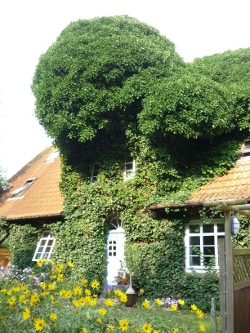
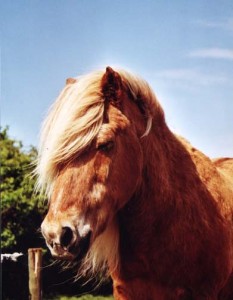
Ponies on a Golf Course
I'm not sure who build a golf course on an island, but this one is no longer in exactly the same use. It is now used for horses and horseback rides.
For a child the happiness surely lays on a horses' back! And the Lerchenhof I learned to love was everything I ever dreamed about.
Their main horse breeds are Shettland horses (not to be mistaken with miniature horses; these are well equipped to handle the harsh winters) and Islaenders (Islandic Horses). But you can also find a few Haflinger (a Bavarion Pony breed, if I am not mistaking) and Fjords (Daenish, as the name gives it away). They also had six regular Warmbloods for the adults.
Islaenders are a special breed. These horses were mend to survive on Island; and do well every else where it is cold enough. They are not that fond of hot summers and can sometimes suffer skin issues from the heat. But you take these 4- or 5- 'gear' survival experts and throw them on an island often facing cold winters, and you can almost see them smile about it!
They are a great size too. They are low enough to make it easy for kids to get on them; and high and strong enough to handle an adult just fine. These are robust horses and bred for toughness rather than elegance. But their additional 2 'gears' can also make them super-comfortable! 'Pass' and 'Toelt' are only found in a few other horse breeds such as the Tennesse Walking Horse.
The Lerchenhof is not only a beautiful example of North German architecture, but also a child's parradise compatible with the 'Immenhof' I used to love in those old movies.
They handle both regular visitors and those there for some horse-lovers' delight. I remember long rides to the beach, lessons by what became eventually my best friend Linda, and discovering the island on four feet! I hope one day I can send my children there!
One of my funniest memories was the ride on Rodi. We had gone for a while and Linda was leading us down some great paths. One child had turned around in the saddle and almost fell off; riding backwards. We had so much fun.
While we were riding along a road Rodi got it in his head to use a nice, sandy spot we were passing by... and attempt to roll around in it (I and the saddle still on his back!). Have you ever had a horse literally shrink underneath you!?
Back then they had a horse that was either in his fourties or fifties; a old black and grey gelding who's name I don't remember. I wish I had found an opportunity to go back to Foehr at least once before Rodi died last year at 35. Mind you, I rode him begin of the 80s! What does it say for his breed to live where he lives and live that long! The weather, the work with tourists... Most lesson horses are butchered at a third of that age and dumped like ...dogfood!
I very much respect the folks from the Lerchenhof for hanging on to him for that long! And for taking such good care about their horses!
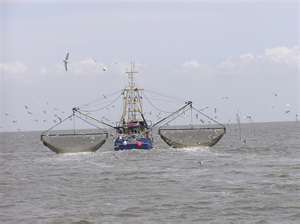
Got to love the food!
I am currently working on an article on some typical North German food. And what explains more the wonderful culinary creations you can find up there than a great influence and delicious variety - Fisch! Yes, Fisch! We spell it with sch!
When we would go shopping in Wyk, we always stopped by the harbor and bought a (German) pound or two of Krabben (Shrimp). You have the tiny ones that are more delicious, but harder to peel; or the large ones we all know as Shrimp. On top of that you can buy a wide variety of seafood at the local stores; anything from my all-time favorite 'Fischbroetchen' to eel, mackerel, whitefish looking varieties to... you name it, it's there; smoked, pickled, yummy!
We would eat the shrimp in a 'peeling contests' and with a little lemon, but everything else was either cooked, smoked and with a sandwich, marinated and on a sandwich, in soups, salads, with meals.... Any form and fashion I can eat it!
But seafood and some rather weird sounding things are not the only delicatessees available. Germans love to eat and know how to cook (I'm either not enough German or an abnormally!). The different cakes, pies, cookies, ...... OH MY GOD!
The food is amazing!
And I would gladly walk two miles again to that old farm we did our first vacation on, if I can have another glass of the fresh, warm milk straight from the cow!
I miss it!
Foehr was an experience I would love to repeat with a good camera, a bit of extra money and my children (Not necessarily in that Order!)
You get a good idea of the North German culture and history, enjoy the endless beaches and attractions, try yourself in a surely 'Knightly' sport; and get to enjoy some of the great German food available.
You may even be able to enjoy the small and local sectret 'Waffelhaus' I remember as Dat ole Huus (plattdeutsch: Das alte Haus (The Old House)). If you do, let her explain you how to correctly eat a Waffle! It will crack you up with laughter! And the food, waffles baked in cast-iron waffle-irons (thickly covered in fresh home-made cream and hot cherries), cinnamon cake straight down from the Gods of Food, and the best hot chocolate I ever had, maybe one of German's only true German All-You-Can-Eat restaurants, will have you work out stuffed like a Thanksgiving Turkey!
This is a great place to re-discover or 'maintain' a family life. I miss it very much!
